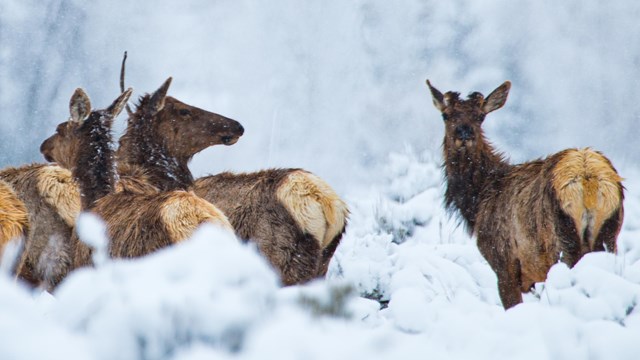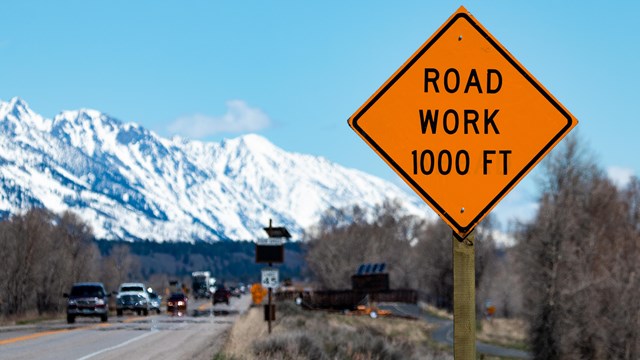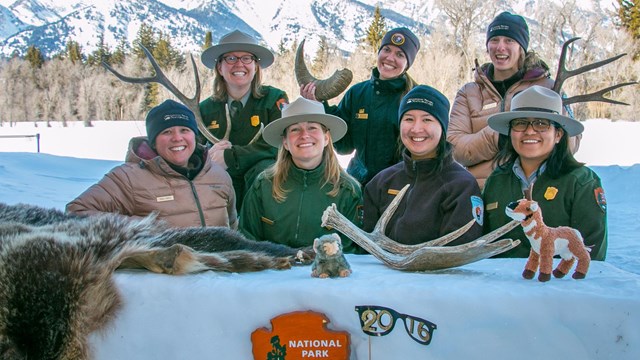
Photo courtesy of J. Skaggs Cross-country skiing and snowshoeing immerse you in the stark silence and exhilaration of winter travel in Grand Teton National Park. Snow provides an excellent backdrop for viewing winter wildlife and animal tracks. Proper preparation and planning ensures a safe and enjoyable winter experience. Safety and EtiquetteIn case of emergency call 911. Use caution skiing on frozen lakes and surfaces. Tell someone your plans. Know your equipment and abilities 
HypothermiaHypothermia is caused by exposure to cold and is aggravated by wind and wet clothing. Warning signs include: uncontrollable shivering, reduced coordination, and incoherent speech. Get the victim inside as soon as possible. If necessary, seek medical attention. Avalanche HazardAvoid known avalanche paths. All skiers and climbers traveling in avalanche terrain should be equipped with, and know how to use, an avalanche beacon, probe pole and shovel. For the Bridger-Teton Avalanche Center current weather forecast and avalanche hazard advisory call 307-733-2664 or check the Bridger-Teton Avalanche Center website. Etiquette
PetsDuring winter, pets are allowed on plowed roadways and parking areas, and the unplowed portions of the Teton Park and Moose-Wilson roads.
WildlifeWinter conditions stress wildlife. Harassing wildlife is prohibited. Maintain a distance of at least 100 yards from bears and wolves and 25 yards from other wildlife. Areas closed to protect wildlife:
Check Alerts & Current Conditions page for the latest closures or date extensions. SKI THE GROOMED ROADExplore the Teton Park RoadTeton Park Road and Taggart Lake TrailheadMoose-Wilson RoadDiscover Phelps Lake in WinterMoose-Wilson Road and Phelps Lake
Wildlife Closures
Know where to go and protect wildlife. 
Park Roads and Construction
Check the status and seasonal closing dates of park roads. 
Snow Desk
Tune in during the depths of winter to our "show from the snow." Snowdesk is Grand Teton's flagship distance learning program! |
Last updated: December 10, 2025
